Contents


The Moscow region is a zone in which, in order to grow an apricot, you need to constantly take care of the tree. In addition, not all varieties are suitable for growing in such a climatic zone. Our article will tell you how to grow an apricot in the Moscow region and which varieties are best suited.
hardy varieties
In the Moscow region, only hardy varieties that can withstand the climate of this zone should be taken for growing apricots. When growing apricots, preference should be given to varieties that have a fairly high resistance to frost, since here this is a fairly common occurrence in the cold season.
In this climatic zone, the following varieties of apricot showed themselves better than others: red-cheeked, hardy, , honey, Snegirek, northern triumph. It is these apricot varieties that received the best reviews from gardeners. In addition to these varieties, other early-growing varieties will also feel good in the Moscow region.
Consider the above types in more detail.
Red-cheeked
Apricot Red-cheeked is the most common variety that is grown today in the Moscow region.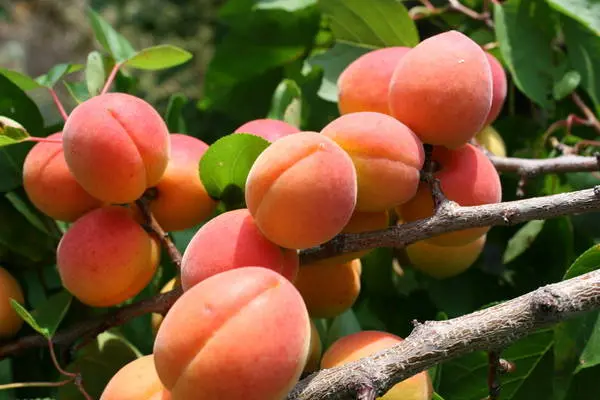
This variety has a distinctive feature, which consists in a rather significant size of the tree, which has a spreading and rounded crown. The tree bears relatively large fruits. The weight of one apricot on average ranges from 40 to 50 grams. They are characterized by an ovoid or round-flat shape. The skin color is golden-orange with a beautiful and pronounced blush. At the same time, apricots look like light pubescence. The skin is quite thin, but at the same time dense. The pulp has a light orange color. It tastes sweet and pleasant, and the bone separates from it quite well. Sometimes the pulp can give a slight sourness. A pleasant aroma of fruits was noted, thanks to which the variety has one of the best reviews for this indicator.
The content of solids in the pulp is 13,70%. At the same time, the content of sugars was noted in the fruits at the level of 9,72%, ascorbic acid – 13,7 mg / 100g, and acids – 1,37%.
Red-cheeked has the following features:
- strong and tall tree;
- high winter hardiness. The variety has the best winter-hardy properties of all fruit plants grown in the Moscow region;
- self-fertility;
- good yield and large-fruited;
- sufficiently high resistance to various diseases.
With improper care, the tree produces small fruits, and the yield becomes irregular. If the care was correct, and the planting of the seedling was successful, then the tree begins to bear fruit already from 3-4 years. The yield is maintained every year. Fruit ripening occurs in July (end of the month). Fruiting is possible on bouquet twigs, spurs, as well as annual growths remaining on the tree after pruning last spring. This variety is characterized by unpretentiousness to soils.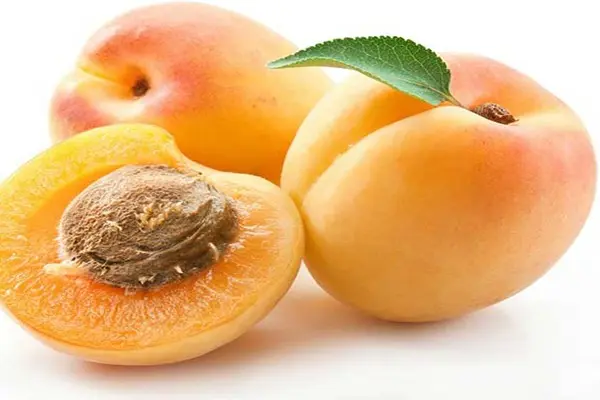
Apricots of the Krasnoshcheky variety can be consumed both fresh and used for making jam, compotes, as well as dried fruits. In this case, the fruits themselves can be stored for one week. They tolerate transportation conditions well.
Apricots of the Krasnocheky variety are considered a universal variety, so it can be grown almost throughout Our Country. But he gained maximum popularity precisely on the territory of the Moscow region.
Hardy
From the name of the variety it is clear that this apricot is very hardy in terms of maintaining low temperatures. Its winter-hardy properties are among the best among apricots grown in the Moscow region. At the same time, winter hardiness extends not only to the tree, but also to its flower buds.
The tree itself is characterized by strong growth. It has a large size and a round crown. It is characterized by medium neglect.
The first fruiting occurs only 5-6 years after planting the seedling in the ground. But at the same time, excellent yields are noted. The fruits are medium in size and have a round-flat shape. The weight of one fruit is 30-45 grams. Apricots are golden-orange in color with a bright carmine blush. The skin is characterized by minimal pubescence. The pulp is tasty and sweet, has a bright orange color. Very fragrant. For her, increased sugar content is described. The separation of the bone from the pulp is quite easy. The seed is quite sweet.
Fruit ripening occurs late – in the first decade of August.
Among the advantages of the variety, the following parameters can be noted:
- stable and high yield. Up to 60-80 kg of crop can be harvested from one tree;
- self-fertility;
- high resistance to most diseases;
- excellent winter hardiness. The tree can withstand quite low temperatures due to the presence of thick bark. Thanks to her, the apricot easily tolerates frost, if there is no damage to the branches of the trunk.
Apricot variety Hardy can be eaten both fresh and in the form of compotes, jams or dried fruits.
An excellent choice for growing in the middle zone of the country, as well as the Moscow region, is the variety. As well as the two previous species, apricot has increased winter hardiness against the background of high yields.
The is a fairly large tree that has a medium-sized crown. Unlike the two varieties described above, the tree does not grow much in height. Its growth is better than the previous two, suitable for a comfortable harvest. Large fruits are formed on the tree, which weigh an average of 50 grams.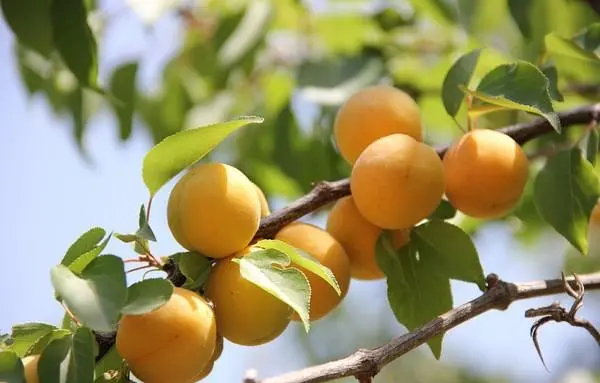
The shape of the apricot is rounded, although outwardly it is slightly squeezed from the sides. The skin of the is colored yellow-orange, on which there is a slight blush. The pubescence of the skin is weakly expressed. The pulp has a harmonious taste and a bright apricot aroma. Its color is yellow.
The fruits are usually consumed fresh. They are not used for processing at all.
The advantages of this type of apricot include the following qualities:
- high yield;
- excellent taste qualities of fruits;
- excellent winter hardiness. Can withstand even 30-degree frosts;
- resistance to a number of diseases.
honeyed
This is a vigorous variety. In height Honey can reach four meters. It is very inconvenient to harvest from such trees without the use of a ladder. It has a wide and spreading crown. Relatively small isosceles fruits are formed on the tree. The skin color of Honey Apricot is yellow. At the same time, small red dots are scattered on it, which are located as densely as possible on the top of the fruit. Characterized by a slight pubescence of the fruit. The apricot pulp of this variety has a fibrous and dense texture. It is yellow in color and has a sweetish taste. According to taste sensations, such an apricot gives odds to many other varieties.
The Honey variety also has the best reviews in terms of winter-hardy properties, as it can withstand frosts down to -35 degrees and even lower.
The advantages of this type of apricot include the following parameters:
- productivity;
- excellent taste qualities of fruits that can be used both for processing and for fresh consumption;
- exceptional frost-resistant properties that allow the plant to withstand even the most severe and long frosts.
The fruits of this tree are most often consumed fresh. But with the same success, jams and compotes are prepared from them.
Snegirek
Another leader in winter hardiness is the Snegirek variety. It is grown today even in the North. Therefore, such a fruit tree will perfectly fit into the climate conditions of the Moscow region, which are not as severe as in the North. A fruit tree can grow in any soil.
A tree of this species grows to a height of only 1,5 meters, which makes harvesting from it very comfortable and convenient. Despite such a rather small size, up to 10 kg of fruit can be removed from one tree.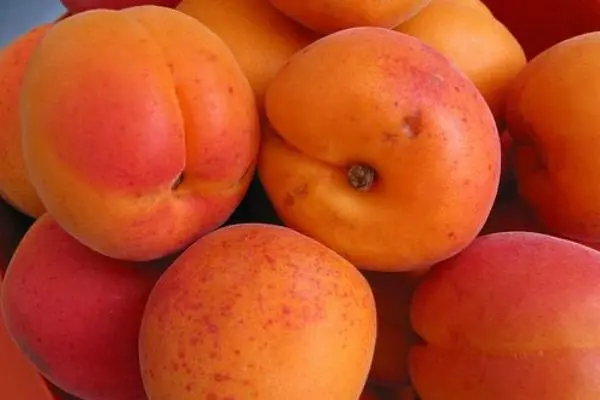
A distinctive feature of the fruits of this fruit variety is increased elasticity, which contributes to an increased indicator of the transportable properties of fruits, and also increases their shelf life. When all storage conditions are met, such apricots can lie and not deteriorate until the middle of winter.
The obvious disadvantages of the species include the fact that the tree has low resistance to certain diseases. Snegirek shows the greatest susceptibility to leaf spot and moniliosis. In the spring, if there is frequent rainy weather, the tree should be given special attention and sprayed against these diseases. If the onset of infection has been detected, then treatment should be started immediately to prevent the possibility of spreading the disease to other trees.
So, the list of advantages of this variety of apricot should include the following:
- no special requirements for the place of cultivation in terms of soil indicators;
- high yield;
- excellent properties of fruits, allowing them to be stored for quite a long period of time;
- high transportability of fruits;
- self-fertility;
- has one of the highest frost-resistant indicators, which allow growing a tree even in the conditions of the northern regions of the country.
Triumph of the North
Triumph Severny was obtained by crossing varieties Severny early and Krasnoshchekiy. It was bred for the central black earth zone. Therefore, in the conditions of the Moscow region, it has some difficulties with wintering, although it tolerates low temperatures with dignity.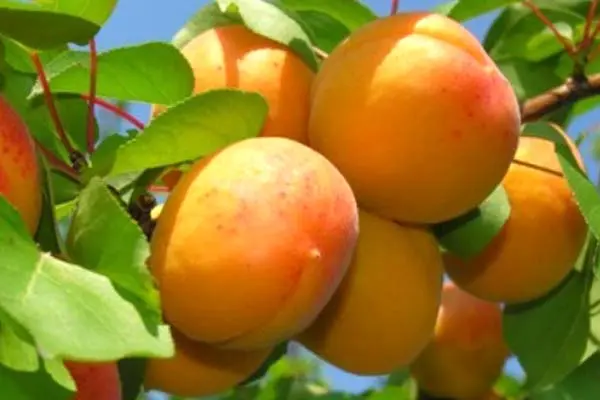
Northern Triumph is a vigorous plant, on which a rather sprawling crown is formed. A similar aspect of growing should be taken into account when planning your garden to avoid unnecessary shading by the tree of other garden plants.
The variety has large fruits that have a round-oval shape. The weight of one apricot can be approximately 55 grams. The fruits have a yellow-orange color, on the shady side of which there is a noticeable green. Marked skin with pubescence and medium thickness. The pulp is homogeneous, has an orange color and a pleasant taste. The taste of apricots is sweet and melting. Medium sized bone.
The first harvest can be obtained four years after planting the seedling.
The advantages of this type of apricot include the following points:
- high yield;
- excellent taste characteristics;
- horizontal resistance to various diseases.
Of course, in some respects, Triumph Severny is inferior to the apricot varieties described above, but it is still quite often grown in the gardens of the Moscow region.
Peculiarities of growing
Considering the climatic features in the Moscow region, certain recommendations must be followed when growing apricots there. When planting a seedling in the spring, for its faster growth and high yield, in the future, the rules for planting, fertilizing and watering should be followed.
When planting seedlings or sprouted seeds, one must take into account the fact that apricot is a light and heat-loving plant. Therefore, the place for further disembarkation should be well lit and warmed up (especially in the morning). It is better to choose the south side from existing buildings or fences. In the placement of seedlings, it is recommended to use the 6×4 scheme, where “6” means the distance in meters between rows, and “4” – in a row.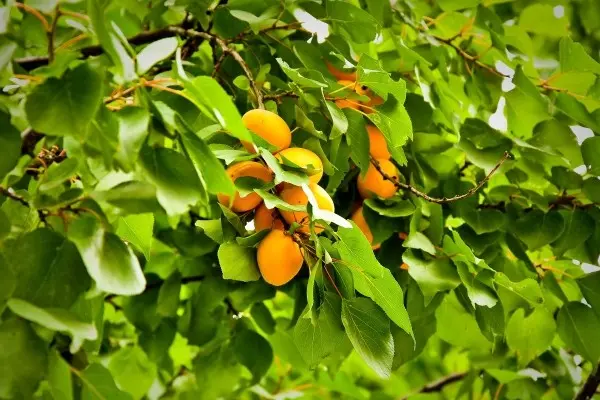 Planting a seedling in the spring of any of the apricot varieties described above should be carried out according to the following algorithm:
Planting a seedling in the spring of any of the apricot varieties described above should be carried out according to the following algorithm:
- dig a shallow hole. Its approximate dimensions should be 70x70x70cm;
- planting a seedling does not involve deep lowering it into a prepared planting hole. It is enough just to cover the seedling with earth a little higher than the rhizome;
- after that, lightly trample the ground with your foot. The earth near the rhizome should be tightly packed.
A planted tree should be watered 5-6 times during one season.
For young trees, it is necessary to observe the water regime, which is more demanding than for adult plants. So, young trees need to be moistened 2-3 buckets more than old trees.
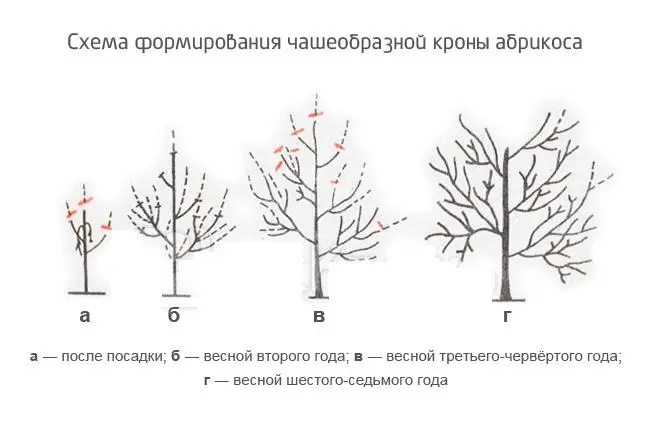
Apricot crown formation scheme
As the plant grows, the amount of watering should be slightly reduced. In addition to seedlings in the Moscow region, there are conditions for growing apricots from the stone. It is often quite problematic to grow a purchased seedling, since not all trees tolerate such stress as transplanting to a new place. Especially if earlier the seedling grew in other climatic conditions. This greatly affects the adaptability of the tree and very often leads to the death of the seedling in the first year after planting.
Planting a seed eliminates this risk and allows you to grow a strong and fruitful plant. If planting a seedling is carried out either in early spring or autumn, then the bone should be harvested from the fall. In the spring it will be too late to do such manipulations.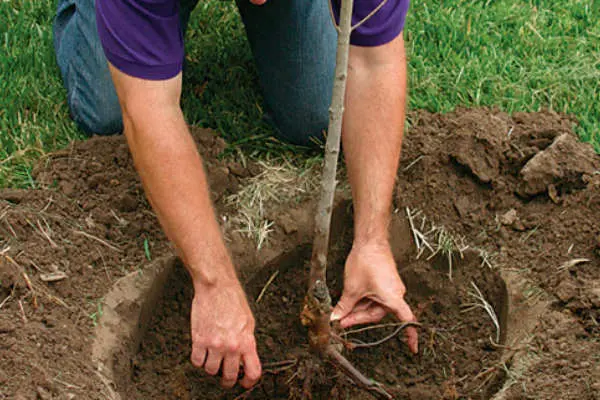
To grow an apricot from a seed in the Moscow region, you should be guided by the following scheme:
- we select the sweetest and largest fruits;
- we separate the bone from the pulp and wash it in water, to which potassium permanganate was previously added;
- prepare a container for the bone. We fill it halfway with sand. We put the bone there so that it is completely under a layer of sand;
- put water into the container. The excess can simply be drained;
- then we close the container with the bone with a lid with holes previously made in it and put it in a cold place (you can in the refrigerator).
Periodically, you need to check the condition of the soil so that it is constantly moistened. With this method, you will receive the first sprouts in March. They will have a bright red color, but in the spring (closer to the middle) they will turn green. Choose the most powerful and strong sprouts from the shoots. We plant them in open ground in the same way as the purchased seedlings.
Since almost all fruit trees suitable for growing in the Moscow region are self-fertile, several apricot trees should be planted in the garden at once. This will increase their pollination and yield level.
In the first year after planting in open ground, it is necessary to mulch the earth along the perimeter of the trunk. If there is no mulching, then the earth under the tree will begin to retain moisture, preventing it from penetrating through the formed crust to the root system. As a result, there is a decrease in the vital functions of the plant, which leads to a decrease in yield, as well as a decrease in the taste of the fruit.
In addition, mulching avoids severe freezing of the soil, which can cause the apricot to die. Young trees have a tendency to freeze the lower branches. Therefore, seedlings and young plants must be covered for the winter, especially the lower branches. This must be done even for varieties for which the highest frost resistance is described (-35 degrees below zero). You can cover with burlap or any other dense fabric.
For young stock in the spring, it is necessary to inspect the trunk for cracks. If they are found, cracks should be covered with garden pitch. To increase the yield of already fertile varieties, you need to fertilize the trees with horse manure and peat.
Since almost all varieties suitable for growing in the Moscow region have strong growth and a rounded shape, there is no need to carry out shaping pruning for the crown.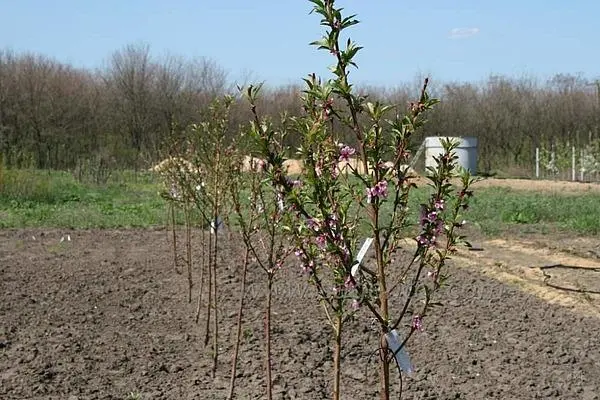
The presence of a fairly high resistance of hardy apricot varieties to various types of diseases is not yet a reason not to monitor the health of trees. Some varieties have medium or even low resistance to certain infections. Here, more careful monitoring of the state of health does not interfere at all and, if the first symptoms of the disease are detected, take the necessary treatment measures. In addition, do not forget about preventive measures, which are the best fight against various infections. For preventive purposes, plants can be treated with Bordeaux mixture, as well as any preparations that contain copper.
As you can see, even in the conditions of the Moscow region, you can plant a fairly large number of apricot varieties that can not only grow, but also give an excellent yield. Proper planting, care and watering will make your garden more fruitful and your fruits will taste better.
Video “Apricot variety Melitopol early”
After watching the video, you will see what the tree and fruits of this variety look like.










